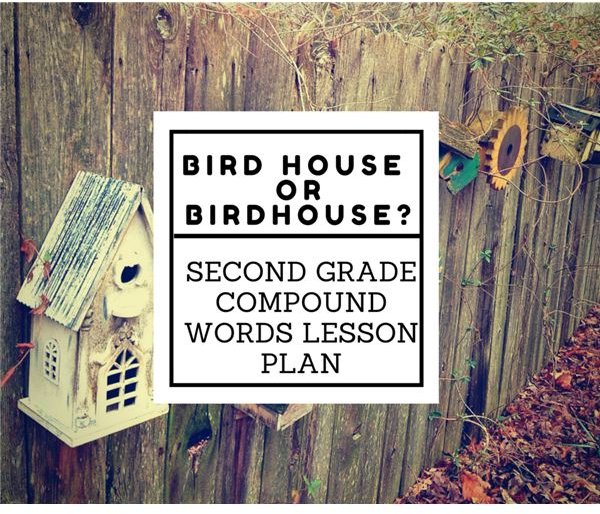Teaching Compound Words: Second Grade Lesson Plan, Book and Activity Ideas
Objective
Use knowledge of the meaning of individual words to predict the meaning of compound words. LA.2.L.4D
Materials
- Book: Thumbtacks, Earwax, Lipstick, Dipstick: What is a Compound Word? by Brian Cleary
- Index cards with one compound word written on each card (see suggestions below)
- 9”x12” construction paper with a small word written on each paper for a matching game
- 12”x18” light colored construction paper, one per student
Wordlist
Armpit, backyard, ballpark, baseman, bathtub, birdhouse,
birthday, butterfly, cowboy, earring, earthquake, eyeball,
freeway, haircut, handshake, headfirst, seafood, shoelace,
shoreline, somebody, sunflower, surfboard, thumbtack, touchdown,
underground, undershirt, upstairs, weekend, worldwide, wristwatch
Procedure
Say to your students, “Sometimes when you are reading, you may come across a big word that you don’t recognize. When you study it for a moment, you might discover that the big word is actually two shorter words that you already know how to read. These are called compound words. A compound word is a word made up of two or more shorter words.”
Read the book Thumbtacks, Earwax, Lipstick, Dipstick. The colorful, crazy illustrations will keep your students’ attention and the variety of compound words will make them realize that there are many compound words in the world! Best of all, the book encourages kids to decode a big word by looking for smaller words that they already know. The book also points out that a compound word can be a noun (ballpark, sunshine) or an adjective (overworked, handwritten) or a verb (daydream, outplayed).
Activities
Choose one or more follow-up activities that best fit your time and students’ abilities.
Use the prepared construction papers (each piece has a smaller word that will form a compound word when matched with the correct word). Give one paper to each student.
Students roam around the room and find a person who has a matching card. When everyone has a partner, each team reads their word aloud.
Students use 12”x18” construction paper, folded to make eight sections. Choose eight compound words to illustrate making a picture dictionary.
Play Pictionary! Use the prepared index cards. Form two teams. Teams take turns choosing a card. One player draws a picture to illustrate the compound word and tries to get the rest of his team to guess the correct word and then spell it.
Throughout the day, tally the number of compound words that the students come across in reading. Can 10 words per day be found? How many days in a row can 10 compound words be found?
Enrichment
Use the book Catch-A-Wave Compounds, which introduces compound words but goes one step further. The second half of the book discusses hyphenated compounds such as: warm-up, check-in, jack-in-the-box, great-grandfather and open compounds such as: health food, peanut butter, high school.
References
- Cleary, Brian. Thumbtacks, Earwax, Lipstick, Dipstick: What is a Compound Word? Millbrook Press, 2011.
- Herman, Gail. Grammar All Stars: Catch-A-Wave Compounds. Gareth Stevens Publishing, 2009.
